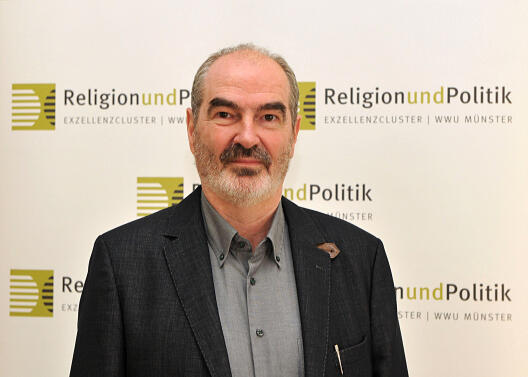Interreligious Theology internationally discussed
Religious Studies Scholar Schmidt-Leukel at the Minzu University in Beijing

The new theories of religious diversity of the scholar of religious studies Prof. Dr. Perry Schmidt-Leukel from the Cluster of Excellence “Religion and Politics” attract interest from researchers in China. The Minzu University of China in Beijing has invited the scholar to present his fractal interpretation of religious diversity in a series of academic events from 9 – 21 October and to discuss it together with Chinese scholars. The scholar of religious studies and theologian will also demonstrate how his theory applies to the relation between Buddhism and Christianity.
Five Chinese professors – religious studies scholars and specialists on Buddhism and Christianity – will comment on Schmidt-Leukel’s theories during several colloquia. Subsequently, the proceedings of the colloquia will be published together the deliberations of Perry Schmidt-Leukel in the Chinese “Journal of Comparative Scripture”. During his stay at Minzu University there will also be a presentation of the recent Chinese translation of Schmidt-Leukel’s monograph “Transformation by Integration”, which deals with the impact of inter-faith encounter and central questions of interreligious theology.
Professor Schmidt-Leukel developed his “fractal theory of religious diversity” by drawing on the fractal theory of the mathematician Benoît Mandelbrot (1924-2010) according to which numerous objects in inorganic and organic nature, such as coast-lines, ferns or cauliflower, are composed of smaller copies of its overall structure. Schmidt-Leukel argues that something similar can also be observed in religious diversity. That is, the global diversity of religions replicates, to some extent, as the diversity that is found within each of the major religious traditions. “The foreign religion and the religious other are therefore less foreign than one might initially assume”, emphasizes Schmidt-Leukel. “The new theory offers an alternative to the widespread theory of the religions’ incommensurability.” However, their similarity is of a different nature.
“Religions resemble each other in their internal diversity”
Schmidt-Leukel presented his theory of religious diversity originally in 2015 when he gave the renowned Gifford-Lectures at the University of Glasgow. An extended version of these lectures has been published in 2017 as “Religious Pluralism and Interreligious Theology” with Orbis Books, New York. The book is currently translated into Chinese and the Chinese edition is due to appear in 2018. “According to my theory,” Schmidt-Leukel says, “religions such as Christianity, Islam, Hinduism or Buddhism resemble each other more than it usually assumed. But they do so in a different way: They resemble each other in view of their internal diversity.” Interreligious theological discourse often produces issues and questions which are also known from the theological tradition of one’s own religion. But through interreligious exchange they appear in a fresh light. According to Schmidt-Leukel, the fractal interpretation of religious diversity meets in China with particular interest because it corresponds in some respects with classical Chinese notions of religious diversity. The traditional symbol of Yin and Yang and its philosophy exhibit a fractal structure in that each of the two principles is also contained in the other one, so that the polarity replicates at a smaller level.
During his academic stay at the Minzu University there will also be a book-launch of the recent Chinese translation of Schmidt-Leukel’s monograph „Transformation by Integration. How Inter-faith Encounter Changes Christianity“. According to Schmidt-Leukel, the present encounter between the religions is, on the one hand, marked by confrontation, but, on the other hand, it also shows signs of reciprocal interpenetration. More and more people borrow insights and practices from other religious traditions for their own spiritual life, thereby developing “multireligious identies”. In China, as Schmidt-Leukel points out, this phenomenon has a very long tradition. In his book he focusses on the theological problems raised by this development. (exc/ill)

